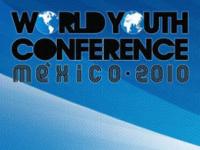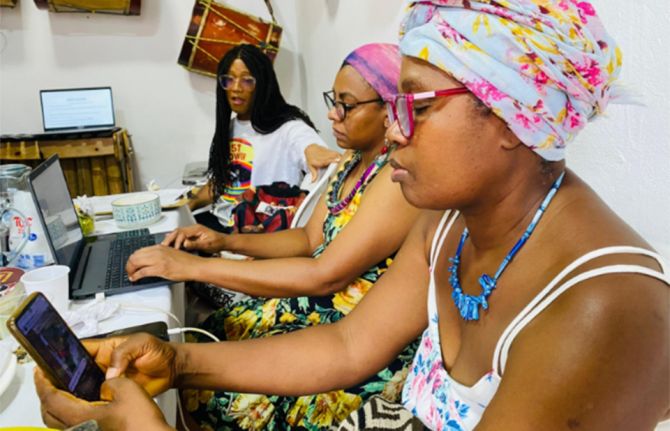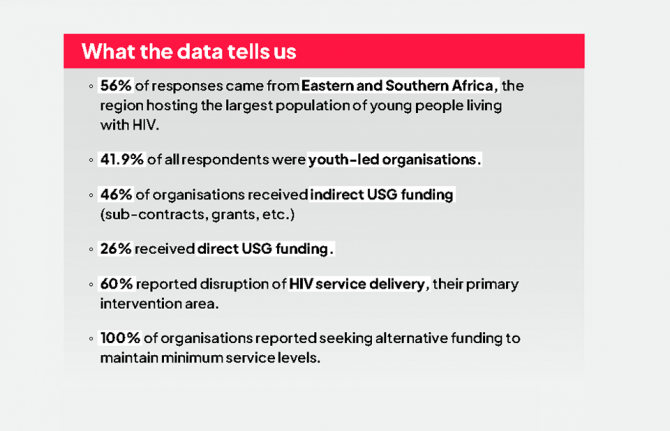
Feature Story
Conference underscores young people’s leadership in HIV prevention
27 August 2010
27 August 2010 27 August 2010
Over five days, delegates from 112 countries—including 25 000 youth and representatives from government, civil society and the United Nations—shared ideas on young people’s involvement in achieving the Millennium Development Goals (MDGs).
The role of young people in improving the state of the world took centre stage at this week’s World Youth Conference in Leon, Mexico. Over five days, delegates from 112 countries—including 25 000 youth and representatives from government, civil society and the United Nations—shared ideas on young people’s involvement in achieving the Millennium Development Goals (MDGs).
With an estimated 40% of new HIV infections occurring among people aged 15-24, a youth-centered approach to the AIDS response will be critical to meet MDG 6—halting and reversing the spread of HIV—and to ensure efforts are sustained in the long term.
In a video message to young delegates, UNAIDS Executive Director Michel Sidibé said that young people had the power to shape a future with zero new infections, zero discrimination and zero AIDS-related deaths. “Each of you is a driving force for change and development in your own countries,” he said. “Together you are an incredible movement that is shaping the future of the world.”
Of the 33.4 million people living with HIV worldwide, some 5 million are young people. An estimated 2500 young people become newly infected with HIV each day. The epidemic has taken a particularly devastating toll on the lives of young women, who account for 66% of infections among youth worldwide.
Empowering young people to protect themselves from HIV represents one of UNAIDS’ ten priority areas, with the overall goal of a 30% reduction in new HIV infections by 2015.
At a joint workshop on HIV and young people, UNAIDS and UNFPA introduced a new “business case” outlining successes to date in the HIV response among youth and areas for improvement. Through the workshop, young delegates were invited to offer their perspectives on the relevance and application of the business case at the national level. Evidence-based information and HIV services, including sexual and reproductive health, were highlighted as critical to reducing infection among young people. Many participants voiced concern over reaching young people with effective HIV prevention messages.
“As we are still young and exploring, we may get into risky behaviors,” said Rodriguez Gastelum, a youth participant from Mexico who attended the workshop. “Correct information on HIV is the first step—that will protect us.”
Less than 40% of young men and women have access to accurate knowledge about HIV transmission—far short of the 95% target set in the UNGASS Declaration of Commitment for the year 2010. In developing countries, excluding China, only 30% of young men and 19% of young women benefit from comprehensive information on HIV.
Despite challenges, there are signs of progress. A new study from UNAIDS has reported a more than 25% drop in HIV prevalence among young people in 15 countries heavily affected by the AIDS epidemic.
“Simply put, young people are leading a prevention revolution all over the globe,” said Dr. César Nunez, Director of the UNAIDS Regional Support Team for Latin America, in a health-focused session at the conference. “The empowerment of young people has led to changes in sexual behavior. Young people are choosing to have sex later, with fewer partners, and they are using condoms.”
Earlier this month, the UN launched the International Year of Youth, an initiative designed to increase youth participation in global development issues and enhance inter-cultural dialogue and understanding across generations. At a launch event in New York City, UN Secretary-General Ban Ki-moon urged young people across the world to look beyond the borders of their own countries: “Engage with the world. Become a global citizen,” he said. “We are the leaders of today. You are the leaders of tomorrow.”
Right Hand Content
Cosponsors:
Press centre:
Joint statement by Heads of UN entities for the launch of the International Year of Youth
Multimedia:
View UNAIDS Executive Director’s video message (You Tube)
External links:
World Youth Conference 2010
International Year of Youth
Publications:
Young people business case for the UNAIDS priority area on young people
UNAIDS Outlook supplement: ‘Young people are leading the HIV prevention revolution’
Global guidance briefs on HIV and young people



